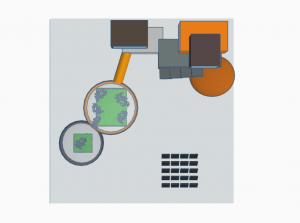Registrations are closed
In the future, to enable astronauts to stay on the Moon for long periods of time, new infrastructures must be developed to overcome important challenges. Such challenges include protection from radiation and meteorites, energy production, the extraction and recycling of water, food production and much more. The Moon Camp Challenge invites students to explore the Moon and decode some of the complexities future astronauts may face.
In Moon Camp Discovery each team’s mission is to 3D design only one component of a Moon Camp using Tinkercad. Teams can choose to design a:
– Lunar lander
– Moon Base
– Lunar rover
– Rocket
– Lunar Orbital Space Station
The design should be adapted to the Moon environment and if possible consider the use of local resources, provide protection and/or living and working facilities for the astronauts.
Moon Camp Discovery is a non-competitive mission for beginners. All teams that submit an entry that complies with the guidelines will receive a participation certificate and their project will be shared on the Moon Camp online platform.
Who can participate?
Participation is open worldwide to students aged up to 19 years old. Moon Camp Discovery is recommended for students aged 6 to 14 years old. Participating students must be supported by a teacher, educator or parent.
Discovery Projects Gallery 2020-2021
Below you can find some of the Moon Camp Discovery projects. For more projects visit the Moon Camp Discovery project gallery.
Team: Zuzola
Zabrze Poland Category: Moon base
External link for Tinkercad 3D design
The project was made by Zuzia and Ola.
The lunar base consists of eight rooms which 6 are residential. The other two are greenhouses, where there are plants which only produce oxygen on the moon .They allow people to breathe in the base, too. Thanks to solar panels, we can generate the energy needed for life. The inhabitants of the headquarters can also perform the simplest activities. They take water from stocks and from glass grains of volcanic origin covering the surface of the moon. Food and water come from stocks, but also from plantswhich produce fruits and seeds. Finally grow into food.



















